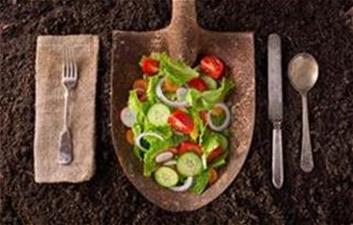Why Eating Whole Food is Best!
What today’s health experts really mean when they tell you to “eat closer to the ground” as a key to being healthy is that you should try to eat more real whole food and to eat them as close to their original state as possible.
Foods can be manipulated in a million ways to make them taste, look and crunch better. There are actual scientists hired to manipulate foods so that they will have a better “mouth feel.” While this does a lot to sell products, it denatures foods and renders them devoid of nourishment. Very few canned, boxed, frozen or packaged food products are considered “real” food.
Think about how corn is grown and all the different processes it goes through to turn that one ear of corn into high fructose corn syrup. It has been milled, heated, added to and reduced. Each one of these processes alters the natural state of the food, taking it “further from the ground” and turning that food into a substance that has very little relationship to the original plant. What’s worse is that the product created has the potential to make you sick, lose energy, and make you fat. The “altered” food has now become an acid-forming food. Acid is hard on the body and leaves it in a toxic “acidic state” where most diseases start. (See our recent post on 27 acidic foods that cause inflammation).
When figuring out if something has been altered, the first step is to decide if that’s the way it grows. If it is boxed, canned, bagged or has a label, something has been done to it. Fruit roll ups don’t grow on trees. Even if the label says it’s natural, it has been altered. Read your labels! Bypass the pretty pictures on the front, the thin woman in a pasture eating a chocolate bar, the promises of it being gluten free, low sodium, whole grain, or low sugar… none of that matters if they’re adding other ingredients to make up for it.
At the bottom of nutrition labels, there are ingredient lists. That’s what you want to look for. It needs to meet with certain criteria. Do you understand the ingredients? How many are there? Would you feed those things to a baby? Are there 5 ingredients or less? If so, it might be a good food for you to consume.
Before putting anything boxed, bagged, canned or frozen into your mouth, think. Look at the ingredient list. Most of the products that have tons of ingredients no one understands or are meant to be easily popped into a microwave aren’t really fit for human consumption. Some of these items have even been banned from the grocery shelves of other countries. Eating them will not rejuvenate you or get you closer to your health goals.
Eating “Whole Food” means:
- Greens. One of the most important things you can do is to eat raw greens multiple times a day — romaine, kale, Swiss chard, spinach, celery, cucumbers.
- Vegetables. Raw is preferable. Eat any and all vegetables. The only way to get efficiently get vitamins and minerals is through plants.
- Lean Proteins. Go for lean animal proteins. Look for hormone free and organic brands. Turkey, fish, chicken, farm raised eggs. But note that all fruits and vegetables have protein in them too!
- Unaltered oils. When oils are heat-treated, they’re damaged and can become toxic. Heat treated oils can make you sick or gain weight. Unaltered oils include raw nuts, raw seeds, extra virgin olive oil, unfiltered sesame oil, unfiltered coconut oil, and butter (but never margarine).
- Fruits. Any and all fruits, preferably raw.
- Water. Forty percent of Americans are dehydrated. Drink at least a half-ounce of water for every pound you weigh. Another rule of thumb is to take a few sips of water every 15 minutes.
- Grains. Some would agree that the human body does not need grains. Most clients that I have taken off grains report feeling better. If you feel you need grains, go for ones that are gluten free and unprocessed. Try to replace a few servings a week with starchy vegetables and see how your body does. Soak grains overnight before cooking to release harmful enzymes and render them more digestible. Try making them in a pot with water or vegetable stock rather than frying. Try brown rice, quinoa, rice cakes, puffed rice cereals, or baked sweet potatoes.
5 ideas to help get you started:
- Eat a plant-based diet. This means getting most of your calories through plants. It doesn’t have to mean becoming a vegetarian, it could mean limiting your animal protein, or increasing the amount of produce you eat.
- Rule of thumb is to fill most of your plate with fruits and vegetables. Eat at least 5 servings a day.
- Avoid fried and denatured food. Anything treated with excess oils and heat has reduced nutrient levels and could be considered quite toxic to the human body.
- Avoid processed, fast and convenience foods. These foods are loaded with salts and sugars to make them enticing, but are devoid of any nutritional value. If it comes in a package, be suspect.
- Try eating a food that is in its natural state at every meal.
Questions? Contact us today.
